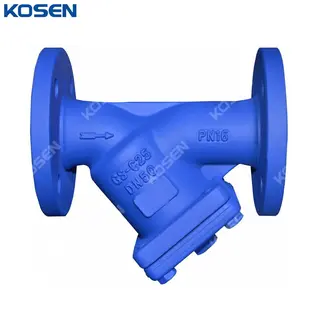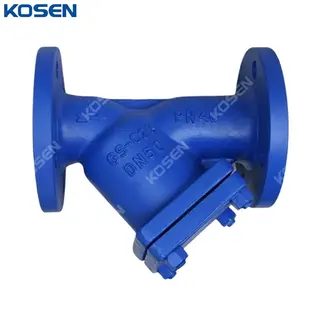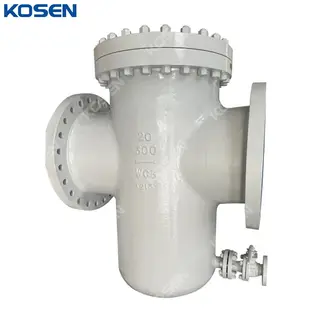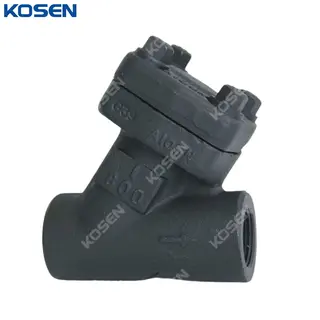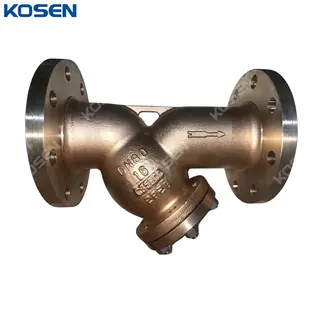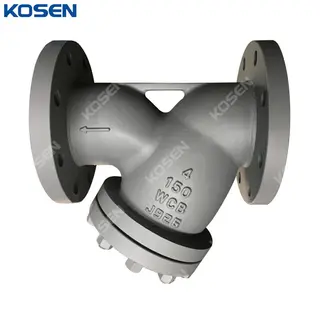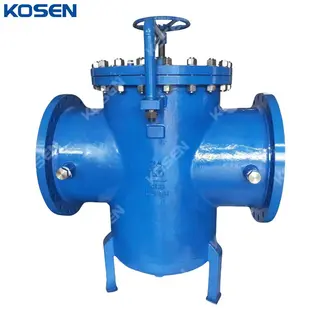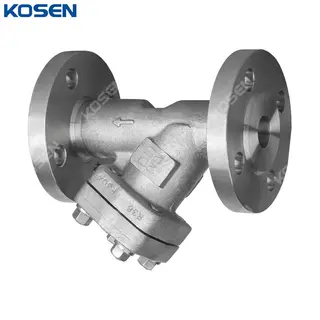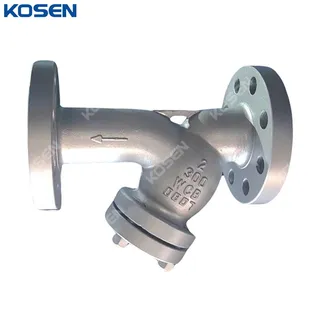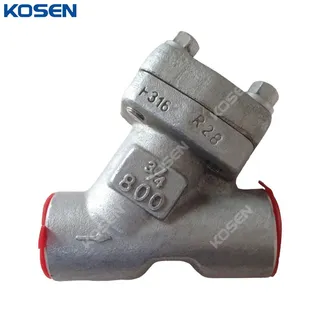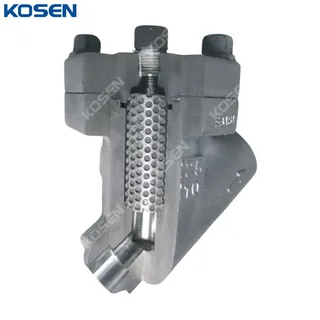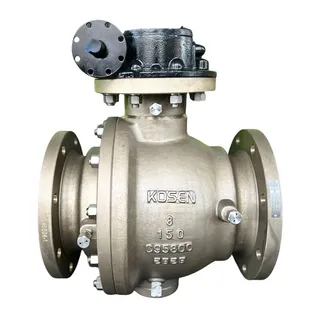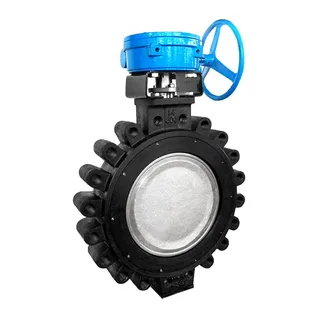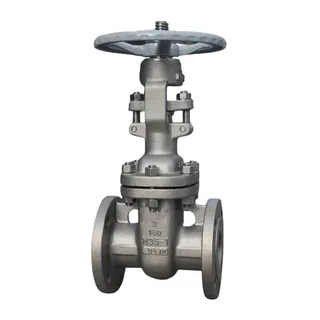A pipe strainer is a device installed in a pipeline system, designed to filter out impurities and particles to ensure the cleanliness of the fluid and the normal operation of the pipeline system.
The strainer operates by allowing the fluid to pass through a filter cartridge equipped with mesh or filter elements, which trap impurities. The specification of the mesh or filter cartridge, including pore size, determines the filtration precision. Different types of impurities such as particles, fibers, sand, rust, and other solids are effectively removed. The strainer allows only clean fluid to pass through, maintaining the desired fluid purity.
When cleaning is needed, the filter cartridge can be easily removed, cleaned, and reinstalled. This simple operation makes maintenance easy and convenient, making it ideal for pipeline systems requiring regular cleaning.
Protection of Equipment: The main function of the strainer is to prevent impurities from entering the pipeline and equipment, reducing blockages and equipment wear caused by contaminants. It effectively protects downstream equipment such as pumps, valves, and instruments, preventing failures and operational issues caused by impurity intrusion.
Improved Fluid Purity: By removing solid particles from the fluid, the strainer significantly enhances the cleanliness of the fluid. This is especially critical for industries with strict purity requirements, such as chemical, pharmaceutical, and food processing industries.
Extended Equipment Lifespan: Strainers reduce the wear and corrosion caused by impurities, extending the lifespan of equipment. With fewer contaminants interfering with operation, equipment can run smoothly for longer periods, reducing maintenance and part replacement frequencies.
Energy and Failure Rate Reduction: Strainers effectively prevent clogging, which can lead to increased energy consumption and higher failure rates due to blockages. By reducing downtime and maintenance costs, strainers help lower overall production costs.
Pipe strainers, as vital fluid filtration devices, come in various types based on their structure and application. Each type has its unique features and is suitable for specific operational environments.
Y-pattern strainers are widely used in pipeline systems transporting various media. They are typically installed at the inlet of equipment like pressure-reducing valves, relief valves, and water level control valves to clear impurities from the fluid and protect the normal functioning of the equipment. Their characteristics include compact design, low resistance, and easy discharge of contaminants. The Y-pattern design allows impurities to be effectively trapped as the fluid passes through, while clean fluid flows smoothly out, preventing clogging and wear in equipment.
An innovative version, the Y-type telescopic strainer, integrates a telescopic joint with the Y-pattern strainer to address installation issues caused by differing flange lengths of products. This design is particularly suitable for high-rise buildings, multi-story buildings, and factory water supply and drainage systems, making it easier to remove debris and ensure proper equipment operation.
Basket strainers are used to remove small amounts of solids from liquids, effectively protecting equipment like compressors, pumps, and other instruments. They are widely applied in industries such as petroleum, chemicals, petrochemicals, pharmaceuticals, and food processing. The basket strainer typically consists of a housing, drain cover, filter cartridge, mesh, and bolts. It is simple in structure and easy to maintain, making it especially suitable for improving product purity and purifying gases.
T-pattern strainers are suitable for various media such as steam, air, water, and oil in pipeline systems. They protect equipment like pumps and valves from clogging and damage caused by impurities such as rust and welding slag. T-pattern strainers feature excellent impurity resistance, convenient impurity discharge, large flow area, low pressure loss, and a simple, compact design. The filter mesh is typically made of stainless steel for its strong corrosion resistance and long service life. T-pattern strainers come in both straight flow and deflected flow types, with mesh densities ranging from 10 to 120 mesh and operating temperatures from 0 to 450°C, allowing for customization based on specific needs.
Pipe strainers play a critical role in various industrial sectors by removing impurities from fluids, protecting equipment from damage, and ensuring the smooth operation of production processes. Here are some key application areas of pipe strainers.
Pipe strainers are used to filter impurities from crude oil, fuel oil, lubricating oil, and other liquids, preventing contaminants from entering pumps, valves, and other critical equipment. This helps avoid blockages and damage, ensuring stable production in the petroleum and chemical sectors. The filtration process is essential for maintaining long-term equipment operation and improving production efficiency in these industries.
During the production of chemicals, solvents, and other liquids, strainers effectively remove impurities, ensuring fluid stability and product quality during the manufacturing process. This is particularly important in the chemical industry, where impurities can affect product quality or cause technical failures in production.
In pharmaceutical processes, pipe strainers are used to remove tiny particles from pharmaceutical liquids, ensuring the purity and quality of the drugs. By filtering out fine impurities, strainers help prevent potential issues that could affect drug efficacy or cause equipment damage, playing a crucial role in ensuring high-quality pharmaceutical production.
In the food and beverage sector, pipe strainers are used to filter liquids such as juice, beer, milk, and drinking water, ensuring the hygiene and safety of the products. The food industry has strict requirements for product purity, and the application of pipe strainers effectively removes impurities from liquids, ensuring the final products meet health and safety standards.
In power plants and power equipment, strainers are used to filter circulating water and cooling water, preventing contaminants like silt and algae from clogging cooling water pipes. This protects equipment and ensures the smooth operation of the cooling system. It helps improve equipment stability and efficiency while preventing cooling system failures from affecting power generation capabilities.
In the steel-making process, pipe strainers are used to filter molten iron, removing impurities. This not only helps ensure the quality of molten iron but also protects downstream processing equipment, preventing mechanical wear and blockages caused by impurities.
Proper installation of pipe strainers is crucial to ensure the normal operation of the system and facilitate future maintenance. Below are the key points for installing pipe strainers.
The installation direction of the strainer should align with its designed flow direction, which is usually indicated by an arrow on the strainer. For example, with a Y-type strainer, ensure that the flow direction matches the arrow on the valve body during installation. Y-type strainers can be installed both horizontally and vertically, but the flow direction requirement must be followed to ensure effective filtration and system stability.
The strainer should be installed in a location that allows for easy maintenance and replacement. Typically, it should be installed on horizontal pipelines with adequate space for operation, making it easy to clean and replace the filter element. For larger filters, such as basket strainers, a supporting structure should be considered to ensure stable and reliable operation of the strainer.
To monitor the strainer's operation in real time, pressure gauges or differential pressure meters should be installed upstream and downstream of the strainer. These devices help detect any blockages in the strainer and indicate when cleaning or replacement of the filter element is needed, ensuring smooth system operation.
To facilitate maintenance, it is recommended to install isolation valves upstream and downstream of the strainer. This allows the strainer to be disconnected from the pipeline system by closing the valves when maintenance is required, preventing any disruption to the system's operation.
To ensure the system remains operational during strainer maintenance, a bypass line should be installed alongside the strainer. The bypass valve should normally remain closed, but during maintenance, it can be opened to allow fluid to continue flowing, thus avoiding system downtime during strainer maintenance.
Pipe Strainer Maintenance Guide
Regular maintenance of pipe strainers is essential to ensure their long-term and efficient operation, particularly the filter elements. Below are the key steps and considerations for maintaining a strainer.
The filter element is the core component of the strainer, typically made of a filter frame and stainless steel mesh. Since the stainless steel mesh is a wear-prone part, extra care should be taken to protect it during use. Over time, the filter element may accumulate impurities, which increases pressure drop and reduces flow speed. It is crucial to remove these impurities in a timely manner to maintain optimal filtering performance.
During cleaning, particular attention should be paid to avoid damaging the stainless steel mesh. Any deformation or damage to the mesh will impair the strainer's filtration performance, leading to a reduction in fluid purity, which could damage downstream equipment such as instruments and valves. If the mesh is found to be deformed or damaged, it must be replaced immediately.
Regular cleaning of the strainer helps remove accumulated impurities and dirt. Use clean water or a suitable cleaning solution to gently scrub the filter surface, ensuring it is clean before reinstalling it. During cleaning, care should be taken to avoid damaging the filter element and other parts.
The filter element is the key part of the strainer, and periodic replacement ensures optimal filtration performance. Follow the manufacturer's or equipment manufacturer's recommendations for regular replacement and ensure high-quality replacement elements to avoid a decline in filtration efficiency and ensure stable equipment operation.
Regularly inspect the connections between the strainer and the pipeline to ensure they are secure. If any loosening or leakage is detected, immediate repairs should be made to prevent safety hazards or energy losses caused by leaks.
If the strainer is equipped with a pressure gauge, regularly check the gauge readings. Abnormal readings may indicate that the strainer needs cleaning or the filter element needs to be replaced. Monitoring pressure changes can help detect problems with the strainer and prevent issues from excessive blockage that could affect the system's operation.
When selecting a pipe strainer, several factors must be considered to ensure the strainer meets the system's needs and provides optimal performance. Below are the key considerations for choosing a pipe strainer.
The inlet and outlet diameter of the strainer should match the size of the pump in the system. Typically, the strainer diameter should not be smaller than the pipeline diameter. For example, if the pipeline diameter is DN100, the strainer diameter should also be DN100 to prevent excessive flow velocity or restricted flow. Matching the pipe and strainer sizes helps ensure smooth fluid flow and effective filtration.
The pressure rating of the strainer should be selected based on the highest pressure likely to occur in the pipeline. For instance, if the pipeline pressure rating is PN25, the strainer should also have a PN25 pressure rating. This ensures that the strainer can withstand the high-pressure environment without malfunctioning.
The choice of filter mesh size depends on the particle size of the impurities to be removed and the flow process requirements of the medium. Common standards for selecting mesh size are as follows:
Water filters: Typically choose mesh sizes from 40 to 80 mesh to effectively remove impurities from water.
Steam filters: Typically choose mesh sizes from 100 to 200 mesh to filter fine particles from steam.
Gas filters: Choose appropriate mesh sizes based on the required gas purity.
The filter mesh specifications will typically list the particle sizes that can be intercepted by different mesh sizes, helping to choose the most suitable strainer.
The material of the strainer should match that of the connected pipeline. Common materials for strainers include:
Cast iron, carbon steel, low alloy steel: Suitable for general working conditions.
Stainless steel: Suitable for more corrosive environments, offering better corrosion resistance.
Fluorine or rubber-lined: Suitable for handling corrosive media, effectively preventing chemical corrosion.
Choosing the appropriate material for the strainer enhances equipment durability and reliability, reducing maintenance and replacement costs over time.
For water filters, the pressure loss typically ranges from 0.52 to 1.2 kPa at the rated flow rate. When selecting a filter, consider the effect of flow rate on pressure loss and choose the appropriate model to ensure system energy efficiency and cost-effectiveness.
